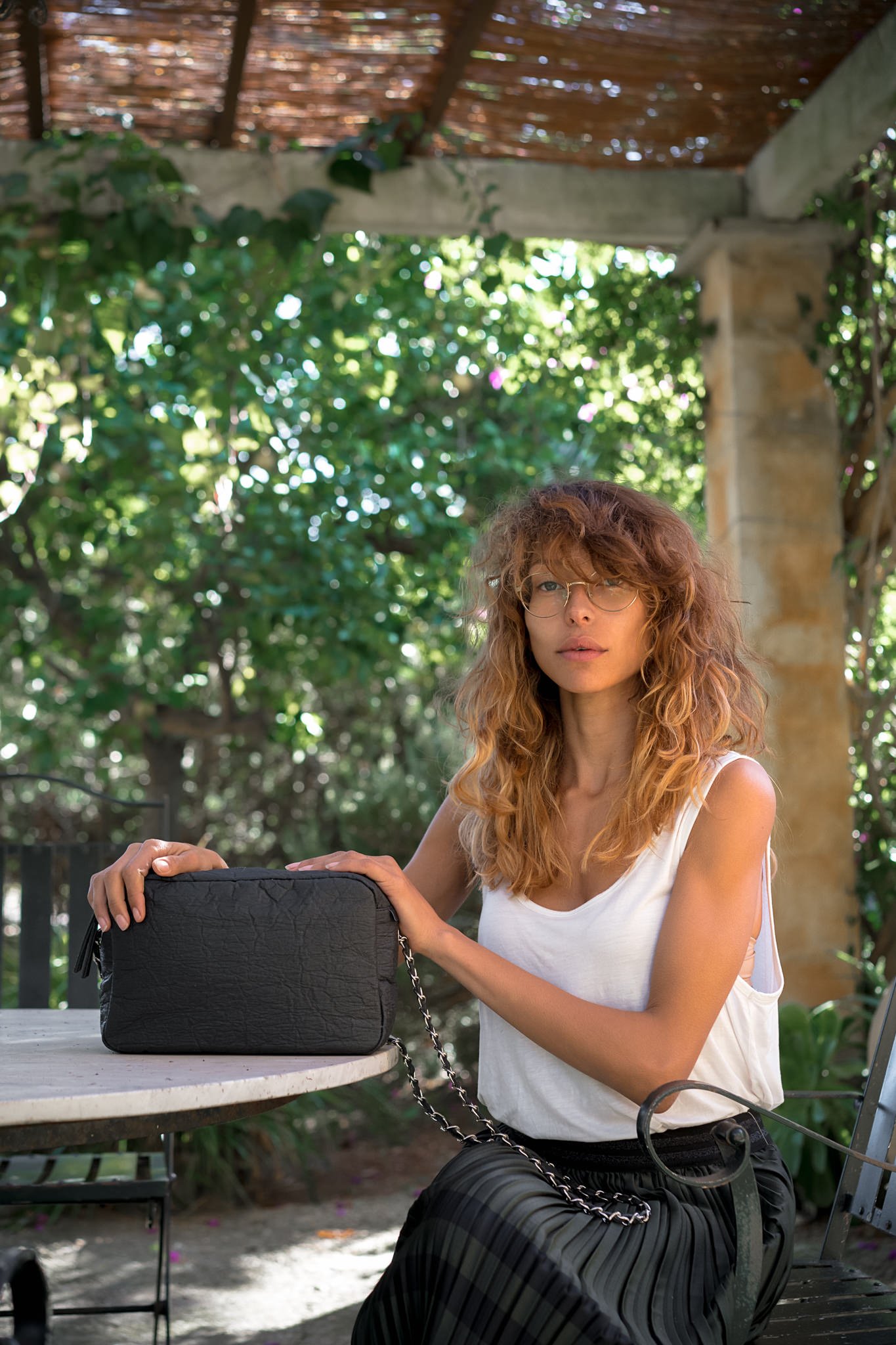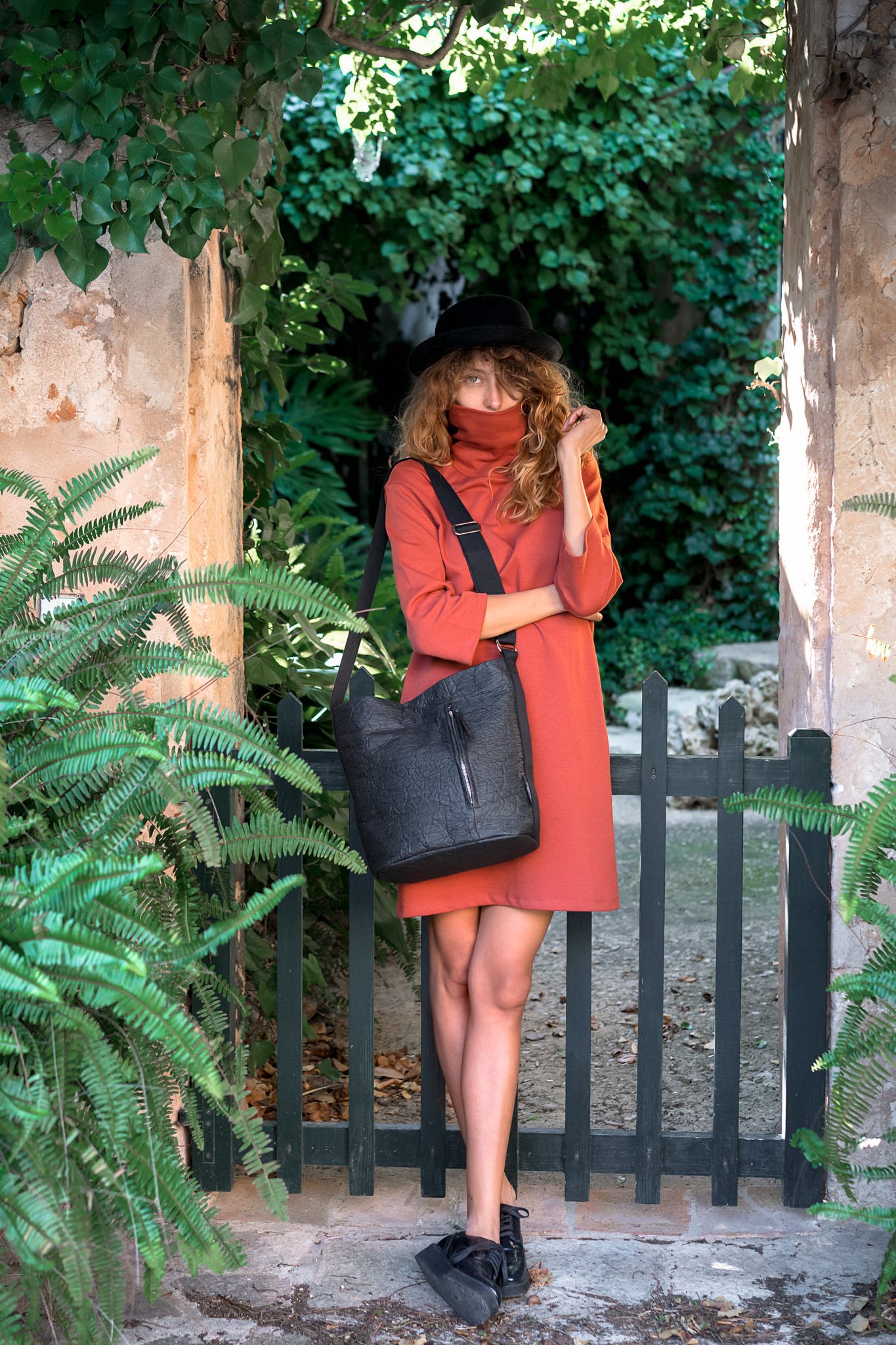INTERVIEW #104 MARAVILLAS
Photo: @soravitl
Based in: Mallorca Spain
Founded in: 2016
Founded by: Christina Bussmann
Stores: Online Shop www.maravillas-bags.com
Price range: 12€ - 279€
Instagram: @maravillasbags
Photo: @soravitl
What is Maravillasbags and why did you start your brand?
Maravillas Bags are handcrafted and sustainable bags designed by Christina Bussmann in Spain, Mallorca. We combine in our studio modern Mediterranean design with traditional craftsmanship. Maravillas Bags offers three collections of handmade bags and accessories and use the highest quality natural materials in a local production:
The PIÑATEX Collection, a vegan alternative, with bags made from pineapple leather.
The ECO LEATHER Collection with bags and accessories in vegetable-tanned leather.
And the WOOD Collection with sustainable bags made with flexible walnut veneer elements.
What is your sustainability profile?
My workshop is located in Mallorca, Spain. Here I work with local people with top-notch experience in the manufacturing of bags. Mallorca has a long tradition of bag and leather processing, which we like to keep alive in a sustaining way. By keeping production local, I can avoid long transport of the goods and remain transparent in all my work. Locally produced = zero emission. Today we understand the devastating effect the production of fast fashion has: exploitation of the environment and people. Fairly paid workers and a minimalistic environmental footprint are not just important to me, but also to my clients. And of course, we believe that both environmental friendliness and fairness are in accordance with the Zeitgeist.
One of the materials you are using is Pinatex, why did you choose this material and why is it sustainable?
Our VEGAN COLLECTION is made from an innovative, natural and sustainable non-woven textile made from pineapple leaf fibres as a green and animal-friendly alternative to leather and petroleum-based materials. The material is called Piñatex™. It is a vegan leather alternative! The pineapple leaves are a by-product of the pineapple harvest, which means no extra water, fertilizers or pesticides are required and the waste of the harvest is minimized. This textile is water resistant, strong, versatile, breathable, soft, light, and flexible, and has passed the ISO international standards tests for seam rupture, tear resistance, tensile strength, light and colour fastness and abrasion resistance.
Photo: @soravitl
Photo: @soravitl
Who are your typical customer?
Our customers are as interested in sustainability as they are in design and want to wear a beautiful bag with a good conscience, far away from mass production. They are customers who like an urban and Mediterranean lifestyle.
What are some of the most popular products?
The SARA foldover bag is choosable in different materials and colour combinations. The OSLO wood bag. The PARIS multifunctional bag is as well available in different materials.
What has been and is the largest gain of having your own brand?
The fact that I can be there every step of the way, from the first idea to the feedback from the customer when she/he holds the finished bag in her/his hands, makes me happy.
Photo: @soravitl
What do you think needs to change in the fashion industry to make it more sustainable?
Paying attention to the fact that clothing also has value and is not a disposable product is the first and most important step. Actually, everything has to change here. Unfortunately, we are still at the beginning. Changing the mindset of people who buy fast fashion is the hardest thing to do and this is where you have to start. But once you have won over more and more people to this change, the industry has to follow suit.
What do you believe is “greenwashing” and what can producers and consumers do to avoid it?
I think we all know what greenwashing means: PR or marketing measures that present a company as sustainable and environmentally friendly, even though this is not the case. In order not to be misled as a customer, one should only buy from labels whose materials and production steps are traceable and comprehensible. As a sustainable bag label, I am open with each of my production steps and the materials I use.
What would you advise consumers to do who seek to create a sustainable closet and lifestyle?
Look for labels that are clearly sustainable and buy there, and don't overdo it or put too much pressure on yourself at the beginning, because that can often become counterproductive.
"Little by little a little becomes a lot."
Photo: @soravitl
Photo: @soravitl







